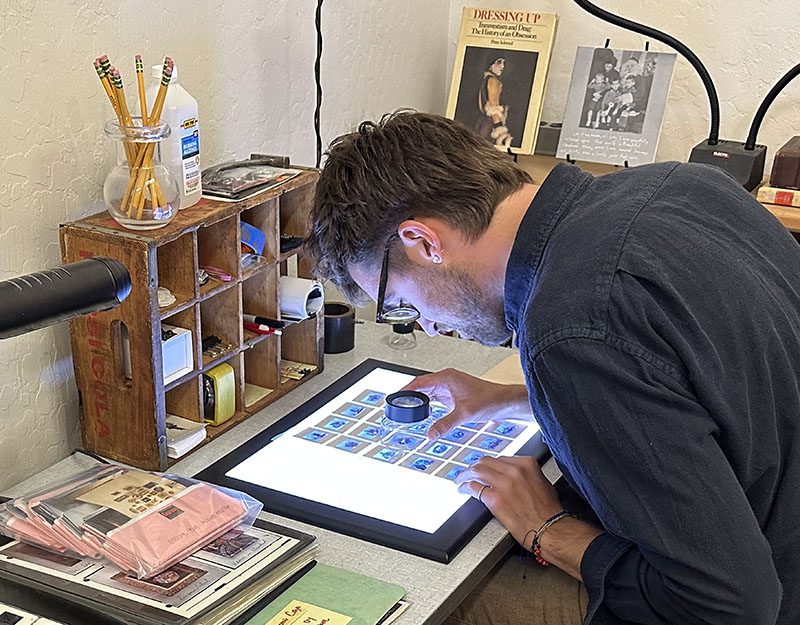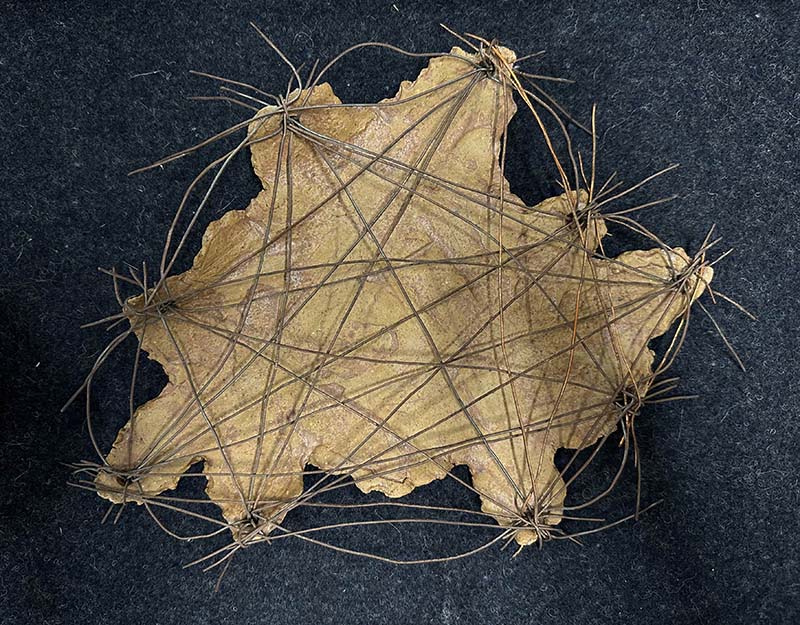Not Everything Is at the Surface: Queer Craft and Jerome Caja
by Graham Feyl
Situating oneself at the intersection of craft and queerness opens many possibilities to reconceive queer art histories. With the generous support of a Decorative Arts Trust Research Grant sponsored by the American Decorative Arts Forum of Northern California, I was able to visit San Francisco for a week to examine the relationship of queer identity with West Coast craft-based practices and materials for my proposed dissertation. I visited the San Francisco Museum of Modern Art’s (SFMOMA) archives, The University of California, Berkeley’s Bancroft Library; the GLBT Historical Society Archives; and The Jerome Project.
Although my current project considers the development of the Rainbow Pride Flag (1976) and subsequent pride flags, the trip to San Francisco allowed me to see a city that has been central to queer history. It also allowed me to engage with an array of archives detailing the connection of queer artists to craft: Howard Kottler (ceramist, American, 1930–89), Martin Wong (painter trained in ceramics, American, 1946–99), Jerome Caja (painter trained in ceramics, American, 1958–95), and Gilbert Baker (creator of the Rainbow Pride Flag, American, 1951–2017).
Caja’s work was of particular interest for this research visit. Caja was a San Francisco-based painter and drag performer whose practice traversed these categories; his work embodied his performative qualities. He created his paintings from materials that could “be found at the bottom of a drag queen’s handbag”: nail polish, lipstick, glitter, sequins, and eyeshadow, to name a few. His works depicted highly charged imagery ranging from sexual trysts to Catholic icons participating in banal acts or art-historical references such as himself portrayed as Botticelli’s Birth of Venus. But before he made paintings, he received his MFA in ceramics from the San Francisco Art Institute (1986). His early ceramic work has been overlooked in scholarship around his practice, which I was able to investigate.
Caja’s estate is stewarded by artist and documentarian Anthony Cianciolo, who generously spent two days showing me Caja’s early work, which helped solidify my speculation of Caja’s ceramic training (figure 1) influenced his later paintings. Cianciolo showed me photo slides of Caja’s ceramics from his graduate studies (figure 2), and I was given the opportunity to analyze some of his work, such as Sadomasochistic Dinnerware (undated, figure 3), along with his paintings. Caja’s ceramic knowledge can be found in his paintings: their cracked surfaces reflect the firing process in a kiln (Caja’s home kiln was his microwave), and the luster from his use of eyeshadows and nail polish reflects the glaze applied as part of the firing. Although his works appear de-skilled, they are created with technical processes in mind.
My project subsequently shifted to the historical framing of Baker’s Rainbow Pride Flag and textile design, but this trip changed how I conceive of the relationship between queerness and craft. My initial understanding had flattened both terms and their historical underpinnings to be a broad, general framework. What I should have been doing was pulling on strands that drew these concepts together and embracing their fluidity, which became evident in Caja’s practice that blurred the boundaries of craft, performance, and painting.
Graham Feyl is a PhD student in History of Art and Architecture at The University of California, Santa Barbara.
About The Decorative Arts Trust Bulletin
Formerly known as the "blog,” the Bulletin features new research and scholarship, travelogues, book reviews, and museum and gallery exhibitions. The Bulletin complements The Magazine of the Decorative Arts Trust, our biannual members publication.
Click Images to Enlarge
Did you know that clicking on the images in Bulletin posts will allow you to get a closer look? Simply click on an image, and a larger version will open in a pop-up window.










